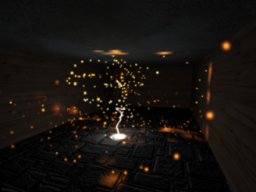Framework 4 (Last updated: October 25, 2019)Framework 3 (Last updated: February 6, 2017)Framework 2 (Last updated: October 8, 2006)Framework (Last updated: October 8, 2006)Libraries (Last updated: September 16, 2004)Really old framework (Last updated: September 16, 2004)
Deferred shading
Tuesday, October 23, 2007 | Permalink

A technique gaining increasing attention these days is deferred shading. The main idea behind deferred shading is that you initially fill a set of buffers with common data, such as diffuse texture, normals and various material properties. Then for the lighting you just render the light extents and fetch data from these buffers for the lighting computation. The main advantage of this technique is that it decouples lighting from the geometry. In regular forward rendering you have to resubmit all the geometry that's within the light radius to add another light. This might include changing a lot of states and shaders and issuing numerous draw calls. With deferred shading only a single call is neccesary, in fact, you can apply several lights with a single draw call. This makes it scale much better than forward rendering when the number of lights increases. On the downside, it typically consumes more memory, bandwidth and shader instructions than forward rendering.
This demo takes deferred shading to the extreme. A particle system in generated entirely on the GPU and spews loads of particles in all directions, and every particle is a light source. Hence in this demo there are 1024 light sources active at once. Yet, the performance is in the order of hundreds of frames per second.
The geometry shader is used in this demo to compute the light bounding boxes and each visible light is drawn as a rectangle in clip-space. Note that the extents in z direction is computed as well. This allows the pixel shader to skip computations where the stored depth value is not in range. This eliminates a lot of unlit pixels.
This demo should run on Radeon HD 2000 series and GeForce 8000 series on Vista.


